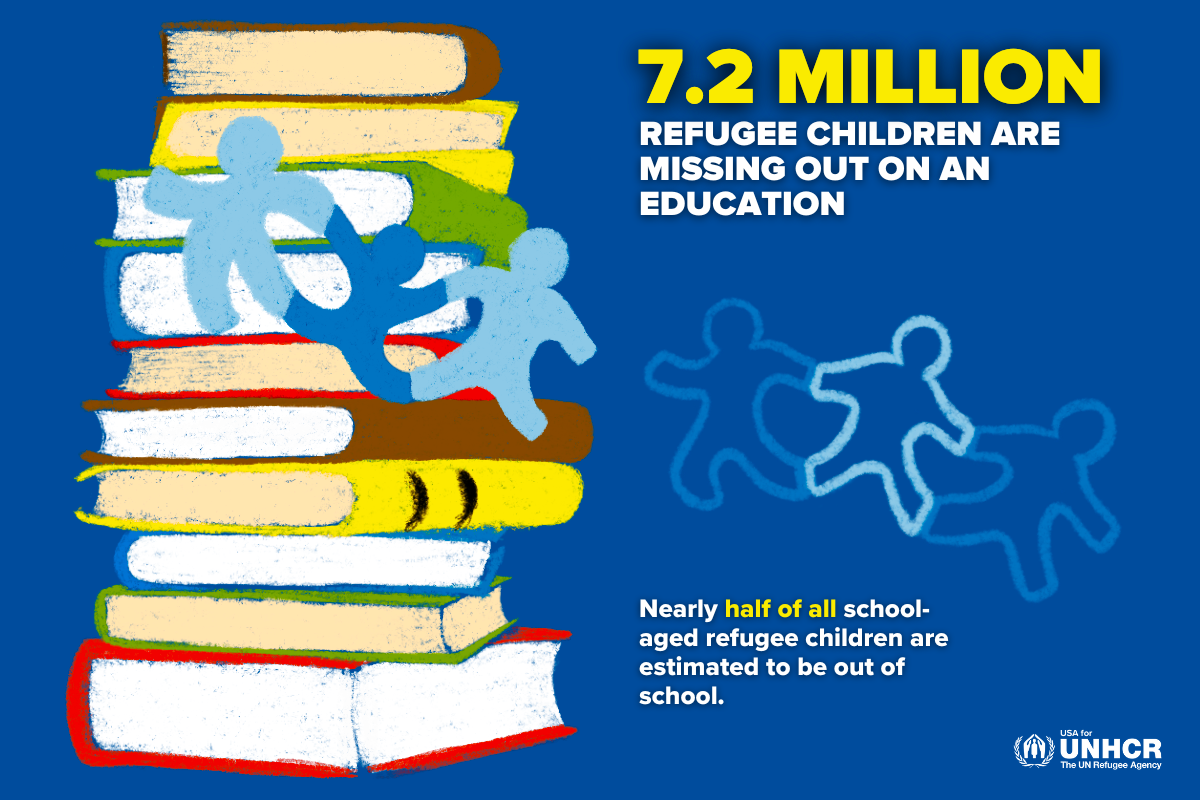Five Takeaways from the 2023 UNHCR Global Trends Report
For the 12th consecutive year, global forced displacement has increased to reach historic new levels. According to the 2023 Global Trends Report released by UNHCR, the UN Refugee Agency, the global figure today exceeds 120 million people forced to flee from persecution, conflict, violence and human rights violations.
The devastating conflict in Sudan, internal displacements driven by conflict in the Democratic Republic of the Congo and Myanmar, among other emergencies and climate-driven events have pushed the figure over the dramatic milestone of 120 million as of May 2024.
The climate crisis continues to trigger extreme weather events and is wreaking havoc on already scarce natural resources for displaced populations. Despite these alarming trends, UNHCR continues to support people forced to flee from war, violence and persecution and work towards finding sustainable solutions.
1. By May 2024, more than 120 million people were forcibly displaced.
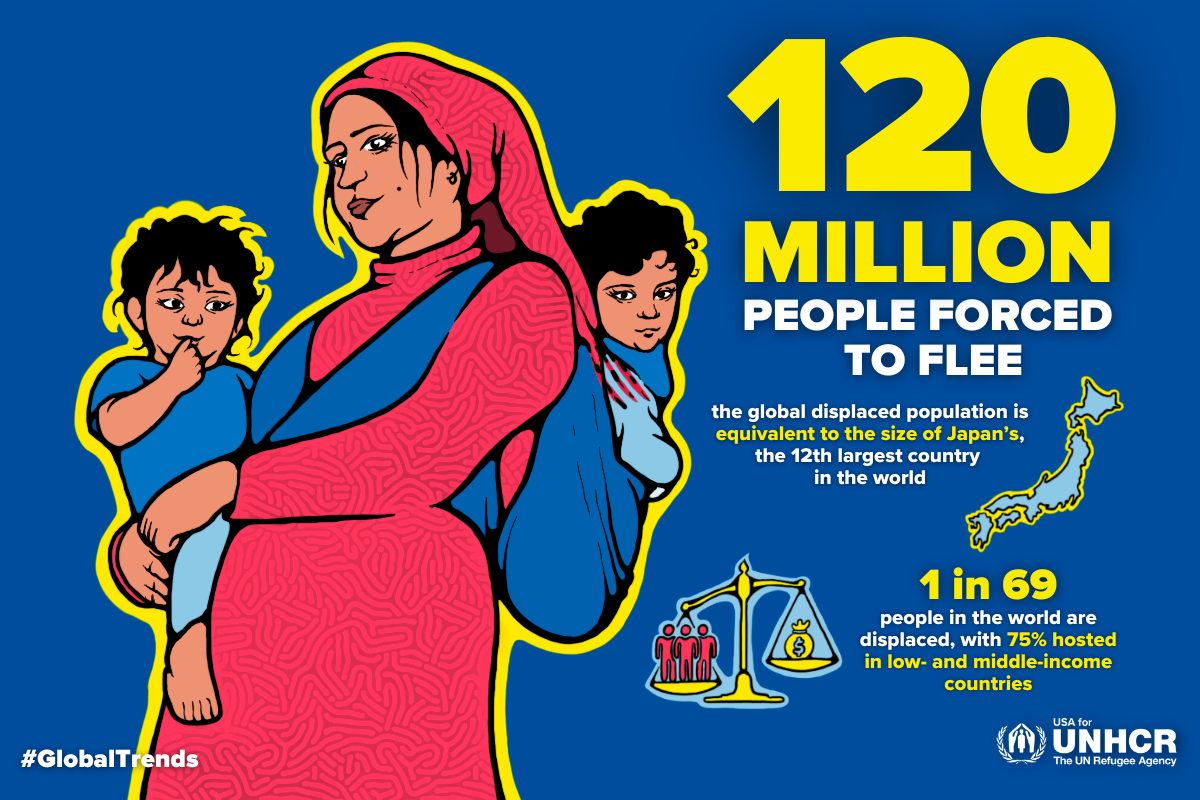
At the end of 2023, the number of people forcibly displaced by persecution, conflict, violence and human rights violations grew by 8 percent compared to the end of 2022. UNHCR estimates that forced displacement continued to increase in the first four months of 2024 and now likely exceeds 120 million people.
The conflict in Sudan that broke out in April 2023 was a key driver of global displacement and has caused one of the largest humanitarian crises in the world. As of May 2024, the number of displaced people has risen to more than 7.1 million within the country and an additional 1.9 million people to neighboring countries. Globally, nearly 10.9 million Afghans remain displaced as returning to Afghanistan, where nearly half of the population is acutely food insecure, is not feasible. The escalation of the war in Ukraine in 2022 continues to drive displacement with a total of 9.7 million Ukrainians forcibly displaced by the end of the year, including one-sixth of the pre-war population who was forced to flee abroad.
A decade ago, one in 125 people were displaced — now the ratio has nearly doubled with one in 69 people, or 1.5 percent of the entire world’s population. The frequency, extent, duration and intensity of conflicts are closely correlated with the number of people forced to flee within their own countries as well as to other countries. If the intensity of recent conflicts continues to grow, so too will the number of people forced to flee each year.
2. By the end of 2023, there were 43.3 million refugees — 73 percent of whom originate from just five countries.
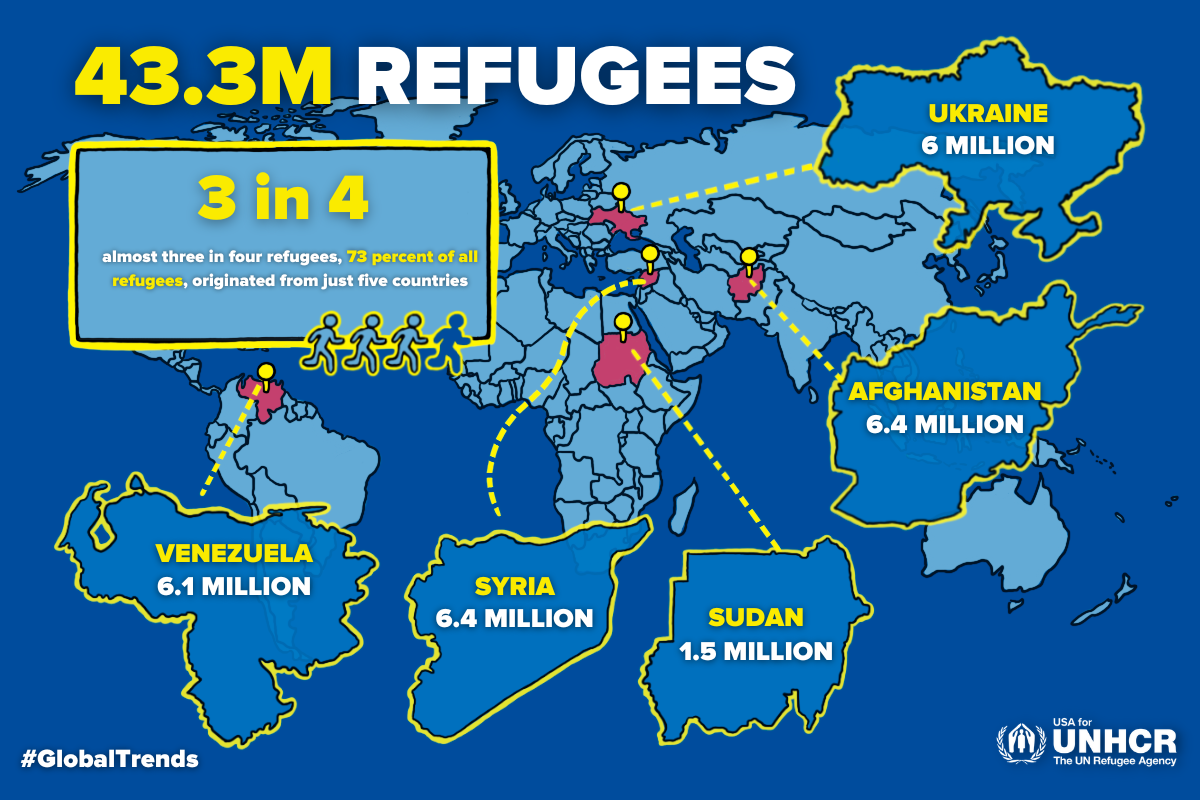
Many refugees have been displaced for several years with no option to return home, integrate or resettle to a third country. By the end of 2023, there were 43.3 million refugees globally, including 37.4 million under UNHCR’s mandate, 5.9 million people in refugee-like situations and 5.8 million other people in need of international protection.
Nearly three in four refugees, or 73 percent of all refugees, originated from just five countries: Afghanistan, Syria, Venezuela, Ukraine and Sudan. The largest refugee population globally are Afghans who constitute one in six of all refugees under UNHCR’s mandate. Globally, the Islamic Republic of Iran, Türkiye, Colombia, Germany and Pakistan hosted the largest refugee populations, including other people in need of international protection.
3. At the end of 2023, almost three-quarters of forcibly displaced people were living in countries with high-to-extreme exposure to climate-related hazards.
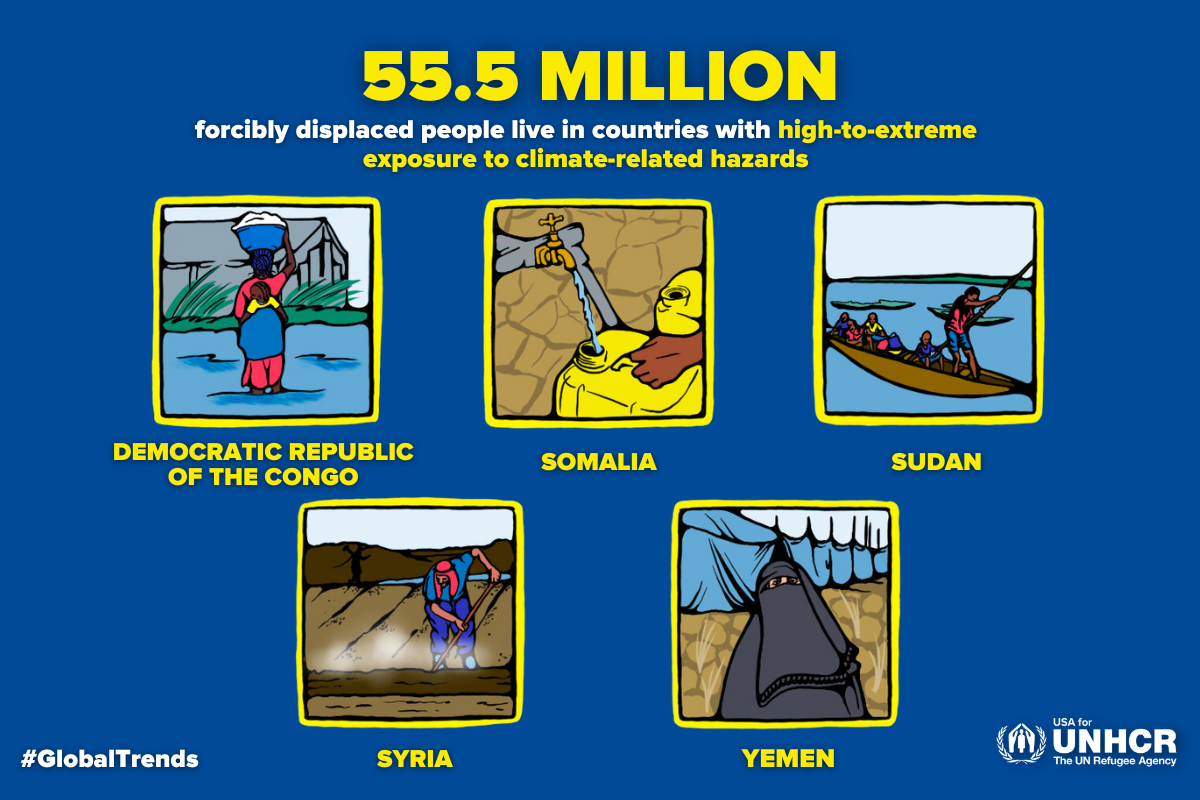
In 2023, global temperatures reached new record highs and the year was marked by dozens of fires, floods and intense storms across the world. Extreme weather events and scarce natural resources, such as dwindling access to water, failed crops or the loss of livestock, can all exacerbate existing vulnerabilities. Without urgent action, climate change impacts will increasingly and disproportionately impact forcibly displaced people.
At the end of 2023, almost three-quarters of forcibly displaced people were living in countries with high-to-extreme exposure to climate-related hazards. Nearly half of all forcibly displaced people were living in countries where they remained exposed to conflict along with climate-related hazards. Countries like the Democratic Republic of the Congo, Somalia, Sudan, Syria and Yemen are experiencing high levels of climate-related hazards along with conflict. Sudan, in particular, is the country where the largest number of forcibly displaced people are exposed both to climate-related hazards and conflict.
4. The number of IDPs grew by 10 percent compared to the previous year, reaching 63.3 million by the end of 2023.
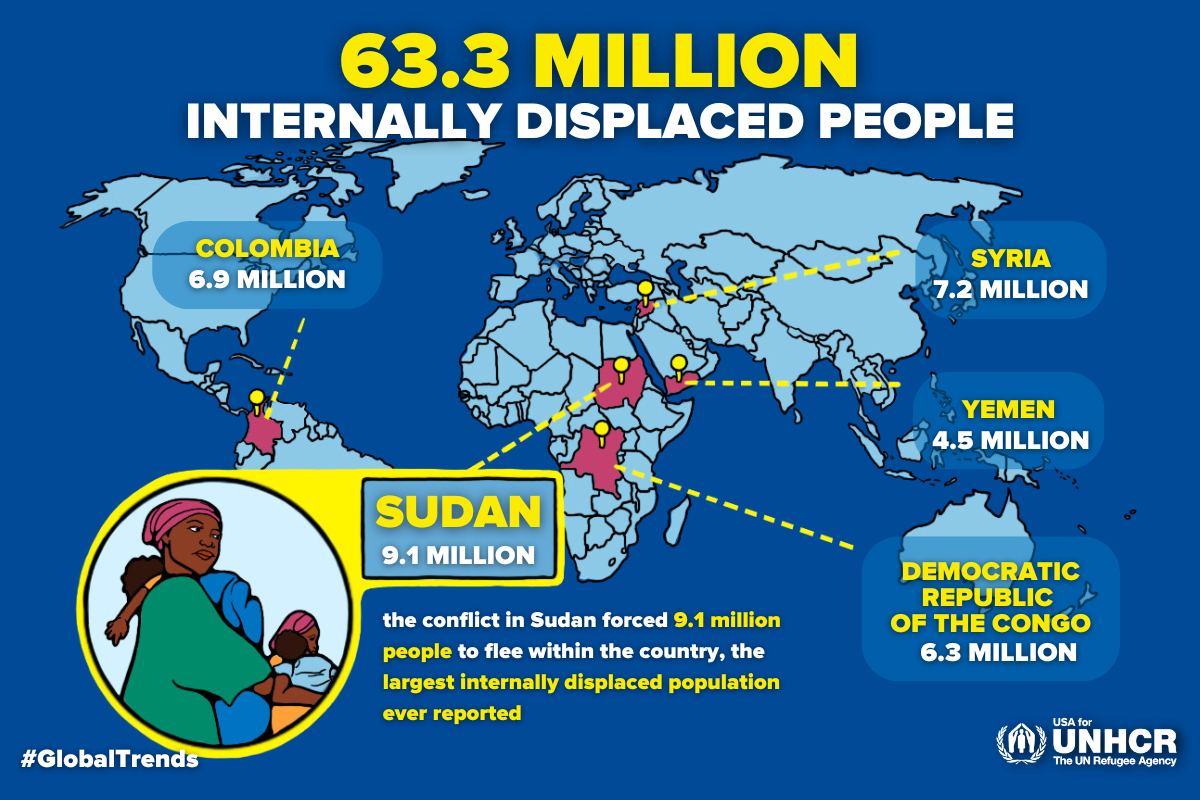
Similar to previous years, in 2023, most forcibly displaced people remained within the borders of their own countries. People forced to flee due to conflict, violence or human rights violations and who remain within their own countries are known as internally displaced people (IDPs). The number of IDPs grew by 10 percent compared to the previous year and reached 63.3 million people by the end of 2023. This reflects a continued increase in the IDP population over the past seven years.
More than 80 percent of the IDP population displaced in 2023 were from just 10 of the 37 countries where UNHCR engaged with IDPs. This is primarily due to the outbreak of conflict in Sudan, which forced 9.1 million people to flee within the country, the largest internally displaced population ever reported. In addition to Sudan — Syria, Colombia, the Democratic Republic of the Congo and Yemen reported large numbers of people displaced within their own countries.
5. In 2023, 6.1 million forcibly displaced people returned home, among other solutions for refugees.
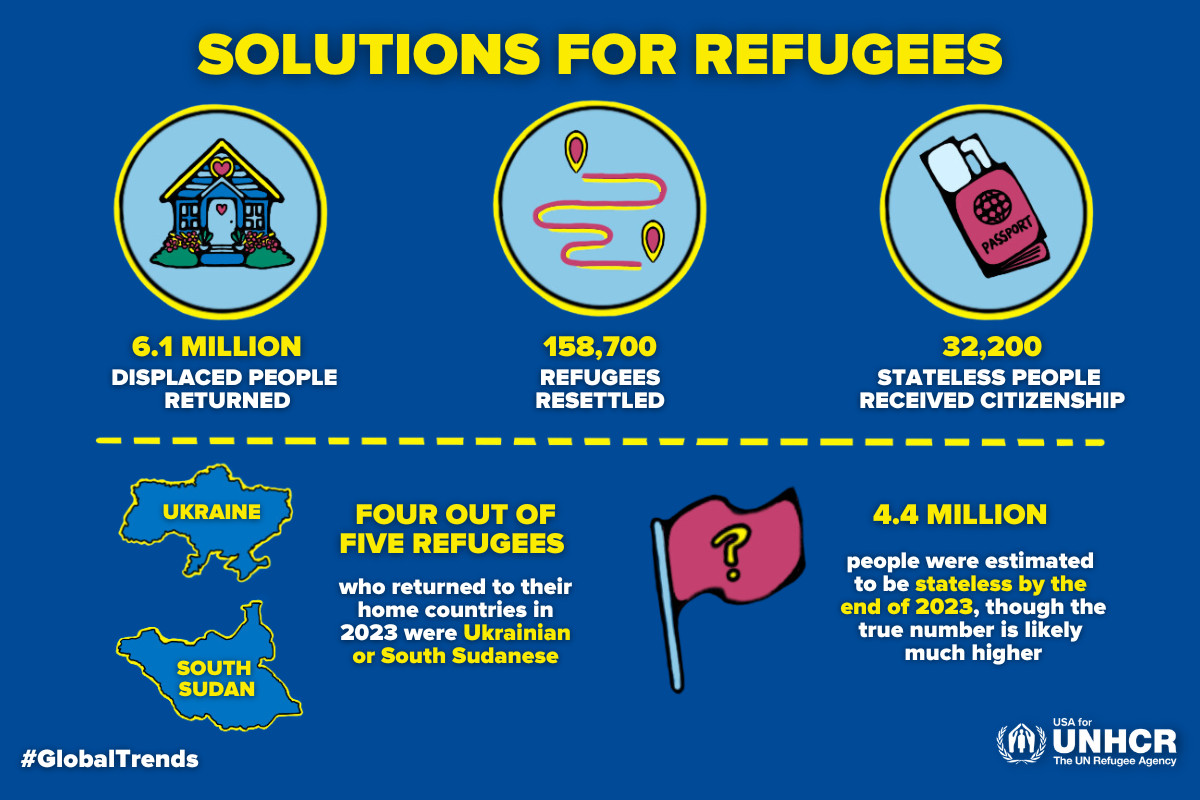
Most refugees would prefer to return to their home countries in safety and dignity than remain refugees or pursue resettlement in another country. In 2023, 6.1 million forcibly displaced people returned home — more than 1 million refugees and 5.1 million IDPs returned to their place of origin. Four out of five refugees who returned to their home countries in 2023 were Ukrainian or South Sudanese. The majority of the 527,200 refugees who returned to South Sudan were driven by the conflict in Sudan.
In 2023, 5.6 million people applied for asylum on an individual basis and were recognized through group procedures, or were granted temporary protection. This is 17 percent less than in the previous year, largely due to fewer people fleeing from Ukraine and receiving temporary protection. Although temporary protection decreased, the number of individual asylum applications reached the largest number ever recorded—3.9 million applications registered—and represents a one-third increase from 2022.
There were 4.4 million people estimated to be stateless by the end of 2023, though the true number is likely much higher. One-third of the global stateless population are also displaced. The largest displaced stateless populations are Rohingya refugees in countries neighboring Myanmar, predominantly Bangladesh. Some 32,200 stateless people had their nationality confirmed or acquired citizenship during the year.
How to help…
With more than 120 million people forced to flee their homes because of war, violence or persecution and critical emergencies adding to this figure every day — we must act in solidarity and support people seeking safety from conflict. Join USA for UNHCR and become our newest monthly supporter to ensure your kindness reaches refugees and vulnerable people who need it most.


